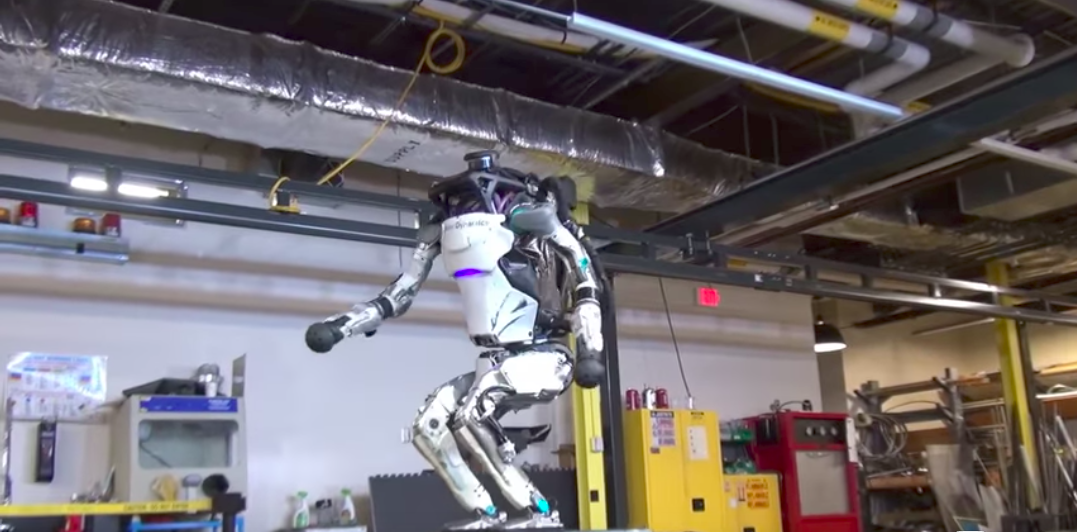
By Heather Hamilton, contributing writer
Boston Dynamics unveiled a new version of the Defense Advanced Research Projects Agency (DARPA) project Atlas robot in 2016, a humanoid robot that could walk and even balance. One year later, they’re showing off a new version of Atlas with considerably more impressive skills: It jumps between things and onto platforms, eventually performing a backflip.
At 5 feet 9 inches tall and 180 pounds, this Atlas weighs less and is shorter than 2013’s, which makes it extremely human-like, something that Extreme Tech reports is very important to the project because, although four-legged machines might add more speed or stability, humanoid robots integrate more easily with a world designed for people. Previously, Atlas was slow and moved a little too robot-like to be eerie, which has decidedly changed in this new version.
The current version of Atlas can do 180° spins, jump onto and over blocks, and does a perfect backflip, landing and raising its arms in celebration, something most humans would struggle to do. The video also shows Atlas nearly losing balance and then regaining it, and still another in which Atlas doesn’t quite make it, falling over after a bad landing. It looks so remarkably human that it is actually difficult to remember that it is not.
It seems that, with the sale to SoftBank, Boston Dynamics is ready to release new videos in shorter time frames, which is about all we have to hold on to. As usual, Boston Dynamics is slow to reveal details, calling the video “What’s new, Atlas” and leaving us with little else, not unlike they did just days ago with the SpotMini, another new version of an old robot with considerable improvements.
According to BostonDynamics, “Atlas’ control system coordinates motions of the arms, torso, and legs to achieve whole-body mobile manipulation, greatly expanding its reach and workspace.” Its unique ability to balance helps it work in large volume while occupying a small space, they continue. “The Atlas hardware takes advantage of 3D printing to save weight and space, resulting in a remarkable compact robot with a high strength-to-weight ratio and a dramatically large workspace. Stereo vision, range sensing, and other sensors give Atlas the ability to manipulate objects in its environment and to travel on rough terrain.”
Douglas Stephen, a research associate at the Institute for Human and Machine Cognition, participated in the DARPA competition that brought us the first Atlas and told NPR that this version of Atlas is impressive because of the way it is made, using hydraulics that integrate tubing into the fabric itself for a lighter, more compact robot.
“A robot doesn’t need to do a backflip. But a robot doing a backflip is really impressive. It’s evidence that we’re getting much closer to being able to design robots that are equivalent or better than an average person.”
Sources: Boston Dynamics, Extreme Tech, NPR
Image Source: Boston Dynamics
Advertisement





